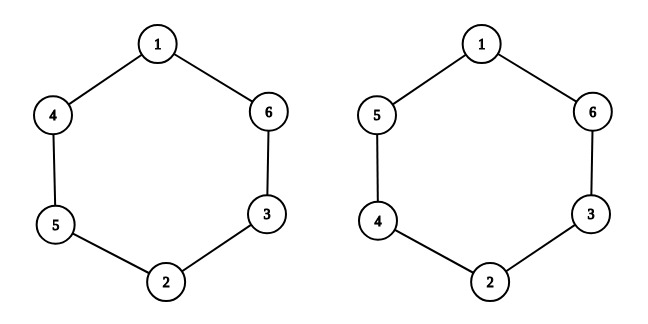CF1205A.Almost Equal
普及/提高-
通过率:0%
AC君温馨提醒
该题目为【codeforces】题库的题目,您提交的代码将被提交至codeforces进行远程评测,并由ACGO抓取测评结果后进行展示。由于远程测评的测评机由其他平台提供,我们无法保证该服务的稳定性,若提交后无反应,请等待一段时间后再进行重试。
题目描述
You are given integer n . You have to arrange numbers from 1 to 2n , using each of them exactly once, on the circle, so that the following condition would be satisfied:
For every n consecutive numbers on the circle write their sum on the blackboard. Then any two of written on the blackboard 2n numbers differ not more than by 1 .
For example, choose n=3 . On the left you can see an example of a valid arrangement: 1+4+5=10 , 4+5+2=11 , 5+2+3=10 , 2+3+6=11 , 3+6+1=10 , 6+1+4=11 , any two numbers differ by at most 1 . On the right you can see an invalid arrangement: for example, 5+1+6=12 , and 3+2+4=9 , 9 and 12 differ more than by 1 .

输入格式
The first and the only line contain one integer n ( 1≤n≤105 ).
输出格式
If there is no solution, output "NO" in the first line.
If there is a solution, output "YES" in the first line. In the second line output 2n numbers — numbers from 1 to 2n in the order they will stay in the circle. Each number should appear only once. If there are several solutions, you can output any of them.
输入输出样例
输入#1
3
输出#1
YES 1 4 5 2 3 6
输入#2
4
输出#2
NO
说明/提示
Example from the statement is shown for the first example.
It can be proved that there is no solution in the second example.